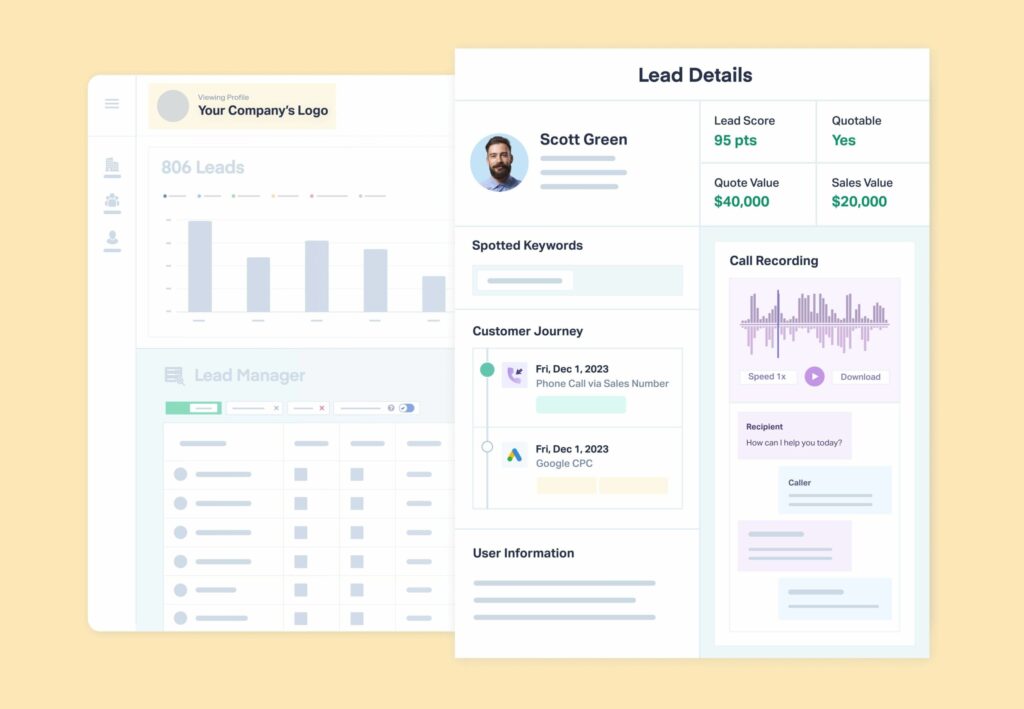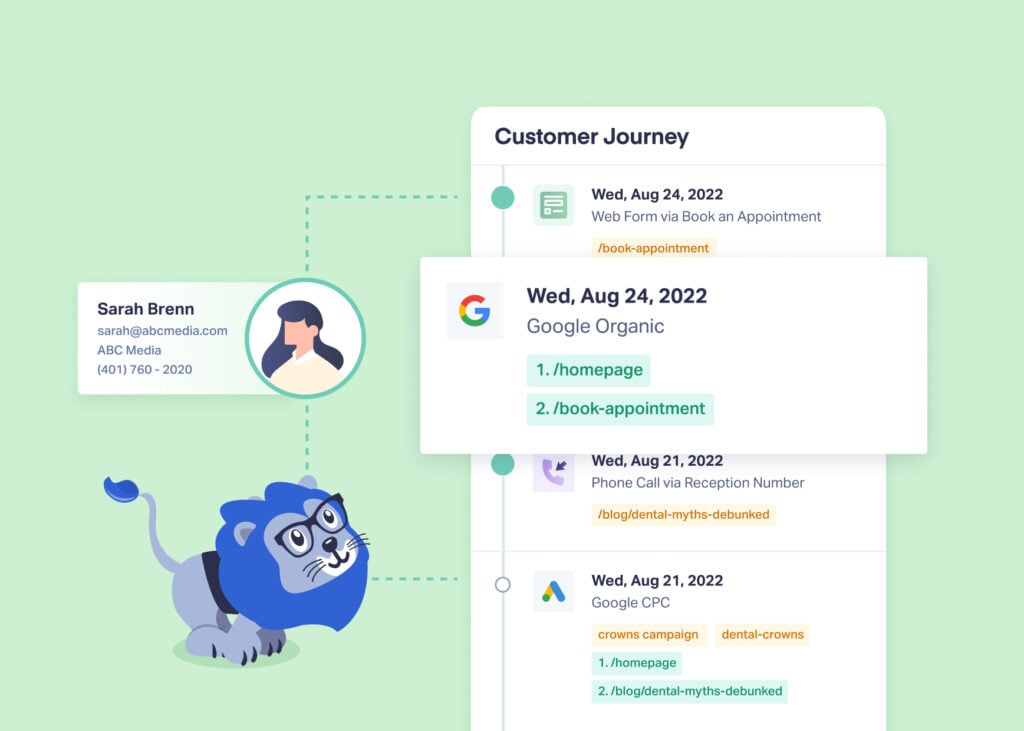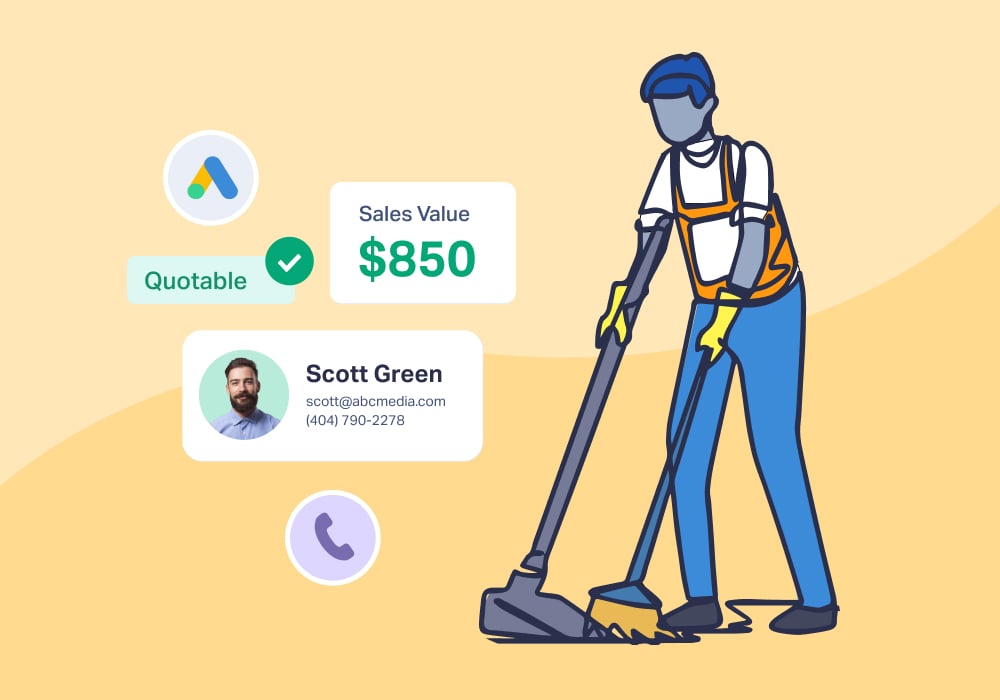
Your marketing budget is stretched thin. Every dollar needs to count. And yet, when you try to pull insights from your CRM to guide your decisions, you're met with a mess of duplicate contacts, missing fields, and inconsistent information that makes it impossible to determine which marketing efforts are actually working.
Sound familiar? You're not alone. According to Validity’s report on the State of CRM Data Management, 44% of businesses believe poor CRM data quality is undermining their ability to grow and provide a positive customer experience.
Your CRM data should be one of your most valuable assets—not your biggest headache. When properly cleaned, organized, and leveraged, this data becomes the backbone of informed marketing decisions, improved customer relationships, and measurable ROI.
This guide will walk you through practical steps to transform your CRM from a chaotic repository into a powerful decision-making engine, complete with strategies that marketing teams and agencies can implement immediately to drive better results.
Why CRM Data Quality Matters
Your CRM is only as valuable as the data it contains. When marketing teams make decisions based on flawed data, it leads to misallocated budgets and missed opportunities. Sales representatives waste time pursuing unqualified leads or reaching out to contacts who have already converted. Customer service struggles to understand customer history, resulting in frustrating experiences for both representatives and clients.
Thankfully, bad data isn’t an inevitability. With structured processes and the right tools, you can dramatically improve your CRM data quality—and unlock its full potential for driving business growth.
Read More: Data-Driven Marketing: Agency's In the Weeds Methods Win 7X ROI [Case Study]
Step 1: Design Your “Perfect” Lead Contact
The best way to start improving your existing CRM data is to first determine what your ideal contact record should include. Take time to define what a “perfect” lead profile looks like for your business by asking:
- What data points do sales teams need to qualify leads?
- What fields help determine a lead’s potential value?
- What information can help marketing teams improve their lead generation channels?
- What contextual information can improve customer personalization?
The perfect lead profile should go beyond basic contact information to include valuable attribution data like original marketing source, campaign, keyword, landing page, and lead page. Qualification data like lead scores, quote values, and sales values are essential for evaluating leads and optimizing marketing efforts to maximize revenue.
Step 2: Update Your Data Capture Process
With your ideal lead profile defined, the next step is to implement collection processes that capture all these essential data points. Update your data collection infrastructure to systematically gather the marketing attribution, qualification data, and value metrics you identified as part of your perfect contact record.
This might include:
- Modifying web forms to include hidden fields that capture campaign and keyword data
- Implementing tracking parameters on all marketing links to record source information
- Setting up call tracking numbers that automatically log marketing attribution
- Creating integrations between marketing platforms and your CRM
- Adding fields for sales teams to input qualification status and potential deal values
A marketing attribution platform like WhatConverts can put all of these collection tools in place at once, or you can opt to design piecemeal solutions to collect individual data points.
Learn More: Automated Data Capture with WhatConverts
When you later move to clean your existing data, you'll apply these same standards, enriching historical records with the valuable data points you've identified as essential to your ideal lead profile.
Step 3: Assess Your Current CRM Data Quality
Now that you’ve defined your ideal contact data, you need to evaluate your current lead data and identify what areas need attention to bring those existing contacts into alignment with your new data standards.
Start by evaluating your data across several key dimensions:
- Completeness: Are all necessary fields populated for each record? For example, a contact might have a name and email but is missing phone number, company, or lead source information.
- Accuracy: Does the information accurately reflect reality? Phone numbers should follow the correct format, email addresses should be valid, and company information should be current.
- Consistency: Is data formatted consistently across records? Inconsistencies like "USA" versus "United States" or "VP Marketing" versus "Vice President of Marketing" create problems for segmentation and reporting.
- Duplicates: How many duplicate records exist in your system? Duplicates not only inflate your contact numbers but also fragment customer histories.
- Timeliness: How up-to-date is your information? Data decay happens quickly—people change jobs, companies rebrand, and contact information changes.
Most CRM platforms offer built-in data quality assessment tools, or you can use third-party solutions to generate comprehensive reports. The key is to quantify your current data health and establish measurable goals for improvement.
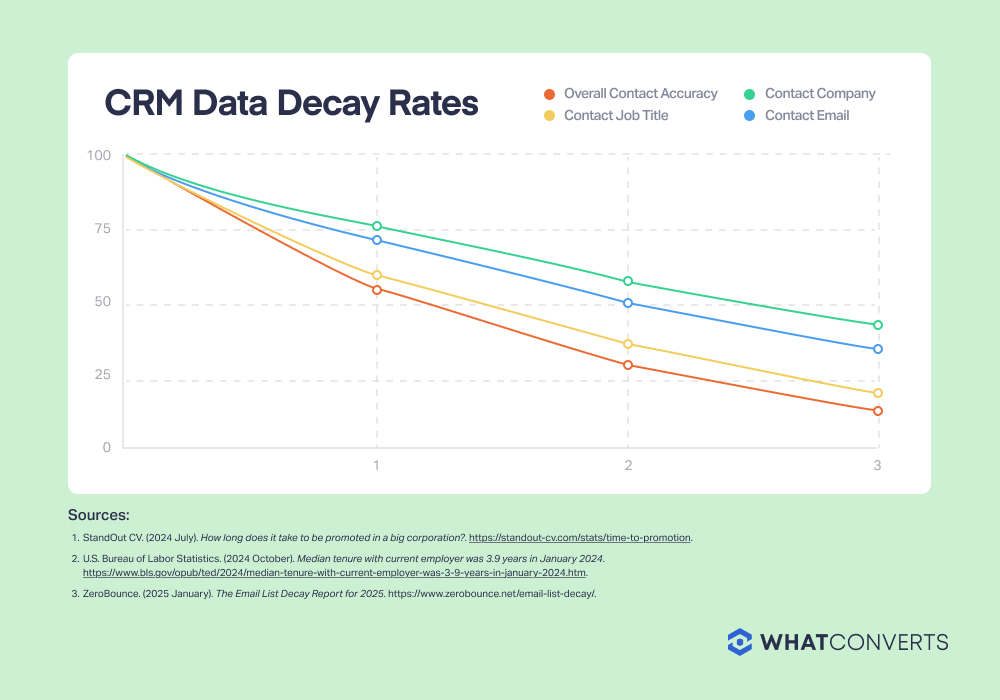
Step 4: Develop a Data Cleaning Strategy
With a clear understanding of your data quality issues, it's time to develop a systematic approach to fixing them. This isn't a one-time project but rather the beginning of an ongoing process.
Establish Data Standards and Guidelines
You’ve already determined what makes an ideal lead contact, but you also need to set consistent standards for what “clean data” looks like in your organization. That includes:
- Standardized formats for phone numbers, addresses, job titles, and other common fields
- Naming conventions for companies, products, and services
- Expected timelines for evaluating and completing new lead contacts
Document these standards in a centralized place accessible to everyone who interacts with your CRM. This becomes your lead governance playbook—a reference that ensures consistent practices across teams.
Set Up Automation for Data Cleaning
While some data cleaning requires manual effort, much of it can be automated:
- Use your CRM's duplicate detection and merging tools to identify and combine duplicate records.
- Implement validation rules that prevent incorrect data entry (e.g., requiring email addresses to follow the proper format).
- Set up regular data enrichment processes that automatically fill in missing information from external sources.
- Create workflows that flag records needing human review (e.g., contacts with bounced emails).
Modern CRM platforms offer increasingly sophisticated automation capabilities for data management. By leveraging these tools, you can dramatically reduce the manual effort required for data maintenance.
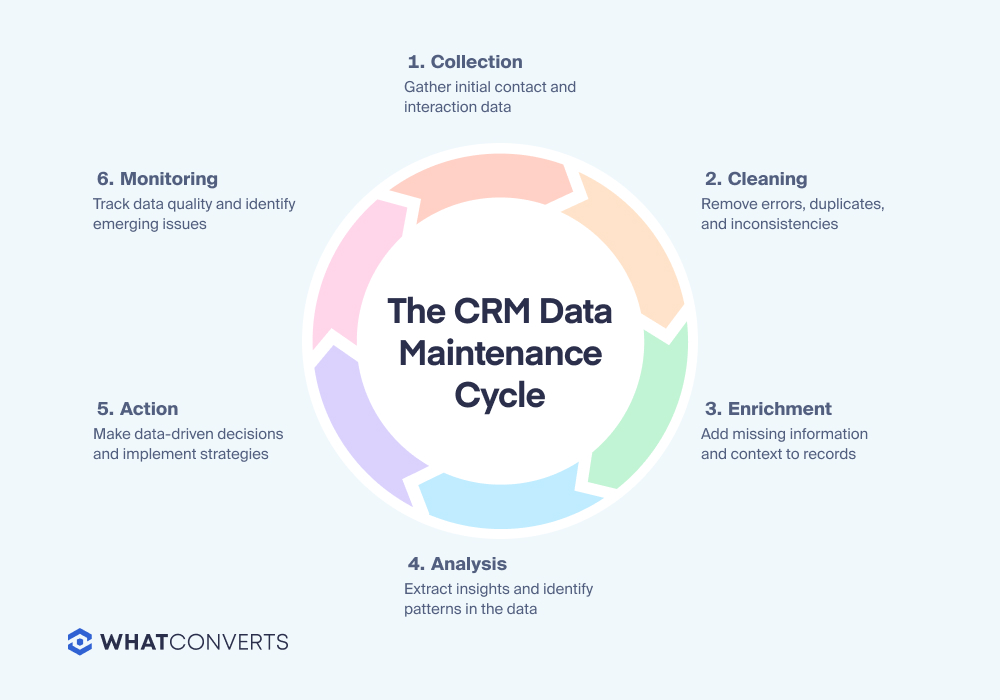
Step 5: Integrate Marketing and Sales Data for a Complete Picture
One of the biggest challenges with CRM data is bridging the gap between marketing and sales information. Marketing teams often work with aggregated data about campaign performance, while sales teams focus on individual lead and opportunity information. This disconnect leads to fragmented insights and misaligned strategies.
Integrate Your Marketing Tools with Your CRM
Ensure your marketing platforms and CRM system can communicate effectively by connecting your email marketing platform, integrating your advertising accounts, linking your website analytics, and setting up your lead generation forms to pass complete attribution data to the CRM.
These integrations create a continuous flow of information, ensuring marketing actions and results are reflected in your CRM data.
Track the Full Customer Journey
Beyond basic contact information, your CRM should capture the complete customer journey including first touch attribution, multi-touch attribution, content engagement, quote values and sales values, and sales interactions and outcomes.
Lead tracking platforms like WhatConverts are specifically designed to capture and organize this journey data, making it accessible both within their own reporting and within your CRM. By connecting every lead to its marketing source and tracking both quote and sales values, you get a clear picture of which marketing efforts are driving not just leads, but qualified leads that convert to revenue.
Implement Closed-Loop Reporting
Closed-loop reporting completes the marketing-sales cycle by feeding sales outcomes back into marketing analysis. This approach allows you to:
- See which marketing channels produce the highest-quality leads
- Calculate true ROI by comparing channel costs to resulting revenue
- Identify customer segments that convert at higher rates
- Refine targeting based on characteristics of successful conversions
By closing this loop, marketing decisions become informed not just by lead quantity but by lead quality and ultimate business impact.
Step 6: Leverage Your Clean CRM Data for Growth
With clean, organized, and connected CRM data, you're now able to extract actionable insights that drive business growth. Here's how to leverage this valuable resource:
Develop Targeted Marketing Campaigns
Use your enhanced CRM data to create highly targeted marketing campaigns:
- Segment your audience based on detailed profile information
- Personalize messaging according to past interactions and preferences
- Retarget prospects based on their specific interests and behaviors
- Focus resources on the channels proven to deliver qualified leads
This targeted approach increases campaign effectiveness while often reducing overall marketing spend—the definition of improved ROI.
Optimize Marketing Budget Allocation
Clean CRM data with proper attribution lets you make informed budget decisions by shifting spending toward channels that deliver high-value leads, reducing investment in sources that generate unqualified traffic, and identifying underperforming campaigns early.
For example, if your CRM data reveals that LinkedIn campaigns are generating twice the quote value per lead compared to Facebook, despite similar cost per lead, you have a clear case for reallocating budget.
Read More: How to Build a Winning PPC Marketing Budget Proposal
Improve Sales Efficiency
When sales teams work with complete, accurate CRM data, they can prioritize leads based on qualification score and potential value, tailor outreach based on the lead's previous interactions, and focus effort on prospects most likely to convert.
These efficiency gains translate directly to higher conversion rates and increased revenue.
Step 7: Establish a Process for Ensuring Long-Term Data Health
Cleaning and organizing your CRM data isn't a one-time project but an ongoing commitment. To maintain data health over time:
- Schedule regular data quality audits (monthly, quarterly, and annually)
- Establish KPIs for data quality and track them alongside business metrics
- Continuously refine your data governance policies based on new challenges
- Invest in tools that automate data quality maintenance
- Keep your team updated on data management best practices
Remember that data quality is never "solved"—it requires constant attention as your business evolves, your customer base grows, and your marketing strategies change.
Conclusion: From Data Chaos to Marketing Clarity
Clean, organized CRM data isn't just a technical achievement—it's a business advantage that pays dividends across your entire organization. By following the steps outlined in this guide, you can transform your CRM from a chaotic repository into a strategic asset that drives informed decisions, improves customer relationships, and generates measurable ROI.
The initial investment in data quality might seem daunting, but the alternative—continuing to make decisions based on incomplete or inaccurate information—is far more costly in the long run.
Ready to transform your approach to CRM data? Start with a free 14-day trial of WhatConverts to see how proper lead tracking can enhance your marketing attribution and CRM data quality from day one.
Get a FREE presentation of WhatConverts
One of our marketing experts will give you a full presentation of how WhatConverts can help you grow your business.
Schedule a Demo
Grow your business with WhatConverts






